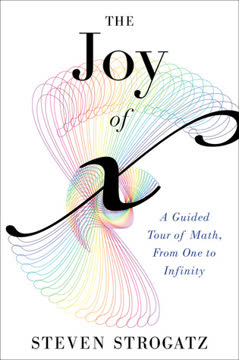Key Takeaways
1. Calculus: The Language of Change and Motion
Calculus wants to make hard problems simpler. It is utterly obsessed with simplicity.
Essence of calculus. At its core, calculus is a tool for understanding and quantifying change. It breaks down complex problems into infinitely many simpler parts, solves them, and then reassembles the solutions. This approach allows us to tackle previously unsolvable problems in physics, engineering, economics, and many other fields.
Two main branches. Calculus consists of two main branches:
- Differential calculus: Deals with rates of change and slopes of curves
- Integral calculus: Concerns accumulation of quantities and areas under curves
These two branches are intimately connected through the fundamental theorem of calculus, which we'll explore later.
2. The Infinity Principle: Slicing the Complex into Simple Pieces
To shed light on any continuous shape, object, motion, process, or phenomenon—no matter how wild and complicated it may appear—reimagine it as an infinite series of simpler parts, analyze those, and then add the results back together to make sense of the original whole.
Power of infinity. The Infinity Principle is the core idea behind calculus. It allows us to approach complex problems by breaking them down into infinitely many simple pieces. This principle has been applied successfully to various fields, from physics to economics.
Examples of application:
- Calculating the area of a circle by imagining it as an infinite polygon
- Analyzing the motion of a falling object by considering infinitesimal time intervals
- Modeling population growth by looking at instantaneous rates of change
The Infinity Principle is not just a mathematical trick; it's a powerful way of thinking that has revolutionized our understanding of the world.
3. Archimedes: The Pioneer of Integral Calculus
Archimedes was the first to glimpse this secret of the universe.
Ancient roots. Archimedes, the ancient Greek mathematician, laid the groundwork for integral calculus over 2,000 years ago. His method of exhaustion, used to calculate areas and volumes of curved shapes, was an early application of the Infinity Principle.
Key contributions:
- Calculated the area of a circle by approximating it with polygons
- Developed methods for finding volumes of curved solids
- Introduced the concept of infinitesimals in mathematical reasoning
Archimedes' work was far ahead of his time and remained unparalleled for nearly two millennia. His ideas foreshadowed the development of modern calculus and continue to influence mathematics today.
4. From Curves to Motion: Galileo and Kepler's Discoveries
Galileo and Kepler ventured beyond the static world of Archimedes and explored how things moved.
Birth of modern physics. Galileo Galilei and Johannes Kepler applied mathematical reasoning to the study of motion, laying the foundation for modern physics. Their work demonstrated the power of mathematics in describing natural phenomena.
Key discoveries:
- Galileo:
- Law of free fall
- Parabolic trajectories of projectiles
- Principle of inertia
- Kepler:
- Three laws of planetary motion
- Elliptical orbits of planets
These discoveries highlighted the need for a new kind of mathematics that could handle continuous change and motion, paving the way for the development of calculus.
5. The Dawn of Differential Calculus: Fermat and Descartes
Fermat and Descartes independently linked algebra to geometry.
Analytic geometry. Pierre de Fermat and René Descartes developed analytic geometry, which unified algebra and geometry. This breakthrough allowed mathematicians to represent geometric shapes using algebraic equations, opening up new possibilities for mathematical analysis.
Key developments:
- Representation of curves using equations
- Introduction of coordinate systems
- Methods for finding tangents to curves
These advances set the stage for the development of differential calculus, providing the tools needed to analyze rates of change and slopes of curves.
6. Newton and Leibniz: The Fathers of Modern Calculus
Newton and Leibniz changed the course of mathematics forever.
Simultaneous discovery. Isaac Newton and Gottfried Wilhelm Leibniz independently developed the fundamental ideas of calculus in the late 17th century. Their work unified and systematized the various strands of mathematical thought that had been developing over centuries.
Key contributions:
- Newton:
- Method of fluxions (his version of calculus)
- Laws of motion and universal gravitation
- Leibniz:
- Introduced dx and dy notation for differentials
- Developed the integral sign ∫
While their approaches differed, both Newton and Leibniz recognized the inverse relationship between differentiation and integration, leading to the fundamental theorem of calculus.
7. The Fundamental Theorem: Unifying Differentiation and Integration
Like a twist out of a Dickens novel, two seemingly distant characters were the closest of kin. Integrals and derivatives were related by blood.
Unifying principle. The fundamental theorem of calculus establishes the relationship between differentiation and integration. It shows that these two operations are inverse processes, connecting the two main branches of calculus.
Key implications:
- Allows calculation of definite integrals using antiderivatives
- Provides a systematic method for solving area and accumulation problems
- Demonstrates the deep connection between rates of change and accumulation
This theorem is considered one of the most important results in mathematics, unifying previously disparate areas of study and providing powerful tools for solving a wide range of problems.
8. Calculus in the Real World: From GPS to Medical Imaging
Calculus enabled the creation of much of what made the global positioning system possible.
Practical applications. Calculus has numerous real-world applications, from everyday technology to advanced scientific research. Its principles underlie many of the tools and systems we rely on in modern life.
Examples of applications:
- Global Positioning System (GPS)
- Medical imaging techniques (CT scans, MRI)
- Financial modeling and risk assessment
- Weather prediction and climate modeling
- Optimization in engineering and manufacturing
These applications demonstrate the power of calculus in solving complex real-world problems and highlight its importance in advancing technology and scientific understanding.
9. The Power of Differential Equations in Modeling Nature
At their deepest level, the laws of nature are expressed in terms of derivatives.
Mathematical modeling. Differential equations, which involve derivatives, are crucial tools for modeling natural phenomena. They allow scientists to describe and predict complex systems in physics, biology, economics, and other fields.
Key areas of application:
- Physics: Laws of motion, electromagnetism, quantum mechanics
- Biology: Population dynamics, spread of diseases
- Engineering: Heat transfer, fluid dynamics
- Economics: Growth models, financial markets
By expressing natural laws in terms of rates of change, differential equations provide a powerful framework for understanding and predicting the behavior of complex systems.
10. The Future of Calculus: Computers, AI, and Beyond
I can imagine a day, not too far in the future, when artificial intelligence will give us proofs from the Book.
Evolving landscape. The future of calculus is intertwined with advances in computing power and artificial intelligence. These technologies are changing how we approach mathematical problems and opening up new areas of research.
Emerging trends:
- Computational methods for solving complex differential equations
- Machine learning algorithms based on calculus principles
- Applications of calculus in big data analysis and pattern recognition
- Exploration of higher-dimensional spaces and complex systems
As our computational capabilities grow, we may be able to tackle previously unsolvable problems and gain new insights into the mathematical structure of the universe. The interplay between human intuition and machine computation promises to push the boundaries of mathematical knowledge in exciting new directions.
Last updated:
FAQ
What's Infinite Powers about?
- Exploration of Calculus: Infinite Powers by Steven H. Strogatz explores the history and significance of calculus, showing how it reveals the universe's secrets. It connects mathematical concepts to real-world applications, making it accessible to a broad audience.
- Historical Context: The book discusses key figures in calculus development, such as Archimedes, Newton, and Leibniz, highlighting their contributions and the evolution of mathematical thought.
- Interconnectedness of Mathematics: Strogatz emphasizes the unity of mathematical concepts, illustrating how calculus bridges various fields, from physics to biology.
Why should I read Infinite Powers?
- Engaging Storytelling: Strogatz combines personal anecdotes with historical narratives, making complex mathematical ideas relatable and engaging.
- Broad Applications: The book demonstrates how calculus is used in diverse fields like medicine, engineering, and economics, highlighting its practical importance.
- Inspiration for Learning: By presenting calculus as dynamic and evolving, Strogatz inspires readers to explore mathematics further, encouraging curiosity and discovery.
What are the key takeaways of Infinite Powers?
- Fundamental Theorem of Calculus: The book explains the theorem connecting differentiation and integration, crucial for calculating areas and rates of change.
- Infinity Principle: Strogatz introduces the Infinity Principle, which involves solving problems by slicing them into infinitely many parts.
- Historical Impact: The transformative impact of calculus on science and technology is highlighted, from Newton's laws to modern medical imaging.
What are the best quotes from Infinite Powers and what do they mean?
- “Calculus is the language God talks.”: This quote suggests that mathematics, especially calculus, is fundamental for understanding the universe.
- “Finding the areas of figures is reduced to this: given a series, to find another one whose differences coincide with the terms of the given series.”: It encapsulates Leibniz's approach to calculus, illustrating the relationship between integrals and derivatives.
- “The future matters.”: Strogatz emphasizes calculus's importance in predicting future events based on current rates of change.
What is the Fundamental Theorem of Calculus in Infinite Powers?
- Connection Between Concepts: The theorem states that differentiation and integration are inverse processes, linking the area under a curve to its slope.
- Mathematical Representation: Strogatz presents it as ( dA/dx = y ), where ( A(x) ) is the area function and ( y(x) ) is the curve.
- Historical Significance: It was a major breakthrough, transforming calculus into a cohesive framework for understanding change.
How does Infinite Powers explain the concept of limits?
- Foundation of Calculus: Limits are fundamental for defining derivatives and integrals, allowing mathematicians to handle values approaching a point.
- Zeno's Paradoxes: The book uses these paradoxes to illustrate the challenges of understanding infinity and continuity.
- Practical Applications: Limits are used in real-world applications, such as calculating instantaneous rates of change.
What is the backward problem in calculus as described in Infinite Powers?
- Definition of the Backward Problem: It involves finding an original function given its derivative, central to integral calculus.
- Historical Context: Described as the "holy grail" of calculus, solving it allows systematic determination of areas under curves.
- Methods of Solution: Techniques include lookup tables and power series, showcasing creativity in solving mathematical challenges.
How does Infinite Powers relate calculus to real-world applications?
- Medical Imaging: Calculus is used in technologies like CT scans and MRI, relying on differential equations for detailed body images.
- Predictive Modeling: It's employed in economics and environmental science to model and predict changes over time.
- Engineering and Technology: Calculus plays a role in designing structures and systems, accounting for forces and motion.
What is the significance of power series in Infinite Powers?
- Building Blocks of Functions: Power series express functions as infinite sums, allowing approximation of complex functions with simpler forms.
- Connection to Integration: They solve the backward problem, providing a systematic way to find area functions.
- Historical Development: The book traces their origins to Newton, enriching the reader's appreciation of calculus.
How does Infinite Powers address the challenges of nonlinearity in calculus?
- Nonlinear Dynamics: Nonlinear systems are complex due to variable interactions, leading to unpredictable behavior.
- Impact on Prediction: Nonlinearity challenges traditional determinism, affecting fields like biology and climate science.
- Mathematical Techniques: New methods, including geometric approaches and simulations, reflect calculus's evolution in response to complex problems.
How does Steven H. Strogatz present calculus as a way of thinking in Infinite Powers?
- Beyond a Subject: Strogatz argues that calculus is not just a subject but a way of thinking about change and continuity.
- Interdisciplinary Connections: The book shows how calculus connects various fields, enhancing understanding across disciplines.
- Mindset of Curiosity: By presenting calculus as dynamic, Strogatz encourages a mindset of curiosity and discovery.
How does Infinite Powers highlight the historical figures in calculus?
- Key Contributors: The book discusses figures like Archimedes, Newton, and Leibniz, highlighting their contributions.
- Evolution of Thought: It traces the evolution of mathematical thought, enriching understanding of calculus's development.
- Narrative Approach: Strogatz uses historical narratives to make the subject engaging and relatable.
Review Summary
Infinite Powers receives largely positive reviews for making calculus accessible and engaging to a general audience. Readers appreciate Strogatz's enthusiasm, clear explanations, and historical context. Many find the book enlightening, wishing they had it earlier in their mathematical education. Some criticize the oversimplification of certain concepts or the repetitive "language of God" metaphor. Overall, reviewers praise the book for its blend of history, applications, and intuitive explanations, making calculus more approachable and interesting for non-mathematicians.
Similar Books



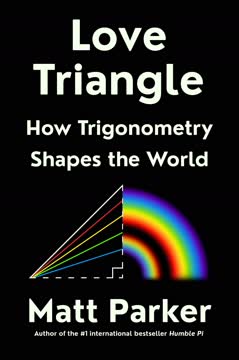
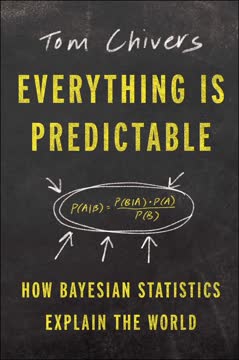
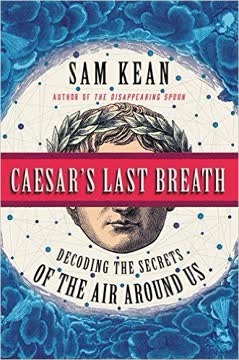
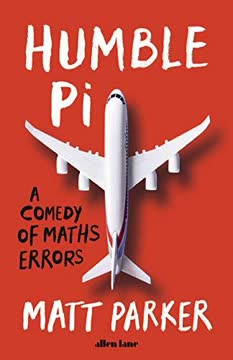
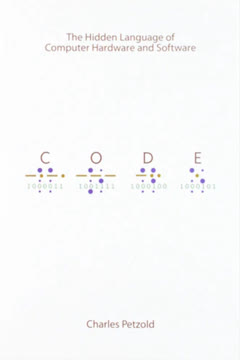


Download PDF
Download EPUB
.epub digital book format is ideal for reading ebooks on phones, tablets, and e-readers.

